Overview
Version
| Report Server Version |
|---|
| 11.0 |
Application Scenario
The pie chart is mainly used to display the relative size and proportion of different categories or parts to the whole.
In a pie chart, a circle is divided into several sectors, and the size of each sector (namely, the degree of the central angle) is proportional to the amount of data it represents.
These sectors are usually distinguished by different colors or patterns, allowing you to clearly view the contribution of each part to the whole.
For example, you can use a pie chart to display the market proportion of various web server manufacturers, as shown in the following figure.

Chart Feature
Advantage: The chart allows you to intuitively see the proportion that each part occupies in the whole.
Disadvantage: The chart is unsuitable for large datasets (when data needs to be displayed in categories) and data with negative values, and you can hardly distinguish the differences when the proportions are close.
Example
Data Preparation
Choose File > New General Report in the upper left corner of the designer, and create a built-in dataset, as shown in the following figure.

Chart Insertion
Merge required cells, select the merged cell, click the Insert Chart icon on the upper toolbar, select Pie Chart, and click OK, as shown in the following figure.

Pie Chart Design
Select the chart, click the Cell Element icon on the right property panel, and set the properties (Type, Data, Style, and Special Effect) for the chart.
Chart Type
Select the cell where the chart is located and choose Cell Element > Type to view and select the chart type.

Data Binding
Click Data and bind required data to the chart, as shown in the following figure.

Style Setting
1. Choose Style > Title, enter Web Server Market Proportion, and remain the default settings of other items, as shown in the following figure.

2. Choose Style > Legend and deselect Show Legend.

3. You can set Value Label and Category Label for a pie chart. In this example, since the category of the pie chart is set to None under Data > Category, you only need to set Value Label.
Choose Style > Label, select Use Label, and select Rich Text in Value Label. Set Position to Outside Pie, and select Traction Line.
The following figure shows the steps.

4. Choose Style > Series, set Color Scheme for the pie chart, and select None from the drop-down list of Line Style in Border, as shown in the following figure.

Effect Display
PC
Save the report and click Pagination Preview. The section "Application Scenario" shows the effect.
Mobile Terminal
The report can be previewed on both the DataAnalyst app and the HTML5 terminal. The following figure shows the preview effect.

Deformed Pie Chart
The two common deformations of the pie chart are the semicircular and ring-shaped pie charts. The following part briefly introduces the setting methods and effects of the two types of deformed pie charts.
Semicircular Pie Chart
You can change the shape of the pie chart by setting Start Angle and End Angle under Style > Series. Set Start Angle to 270 and End Angle to 90 to form the semicircular pie chart.

The following figure shows the preview effect.

Ring-Shaped Pie Chart
You can realize the hollow-out style in the pie chart by modifying Core under Style > Series.

For example, the following figure shows the preview effect when you set Core to 80%.

Template Download
For details, you can download the template Basic Pie Chart.cpt.







